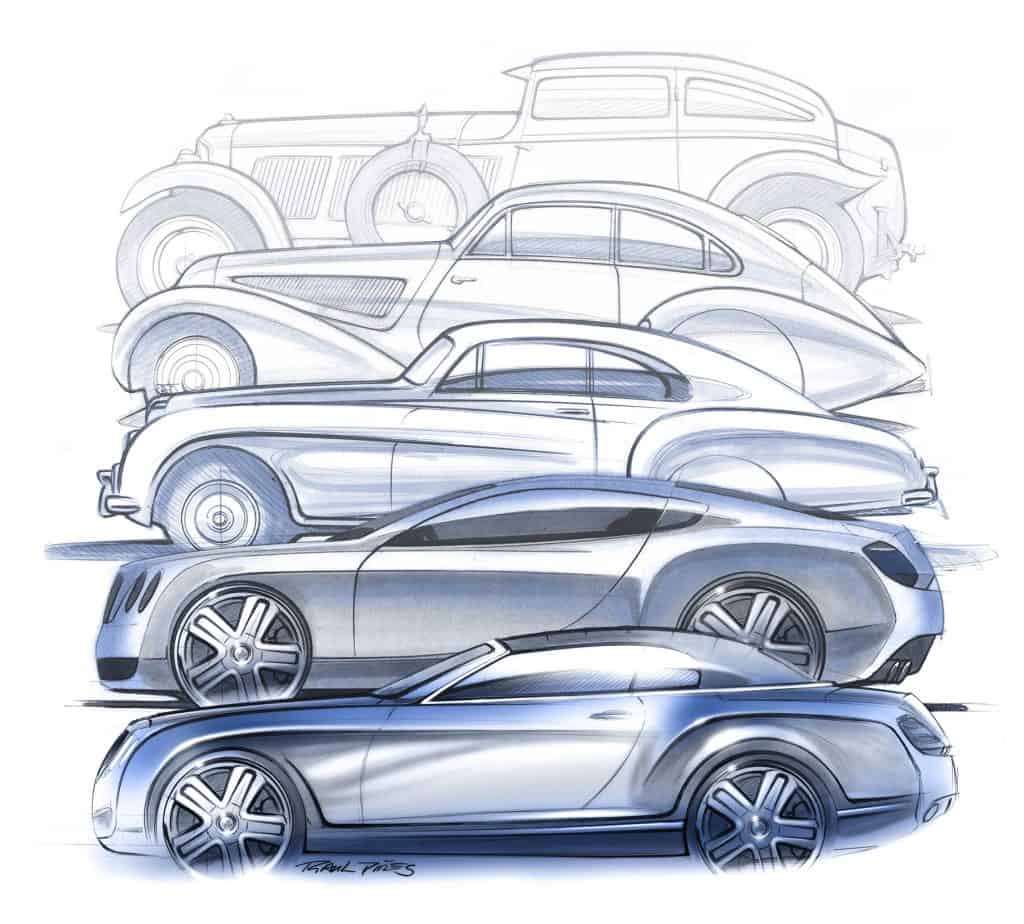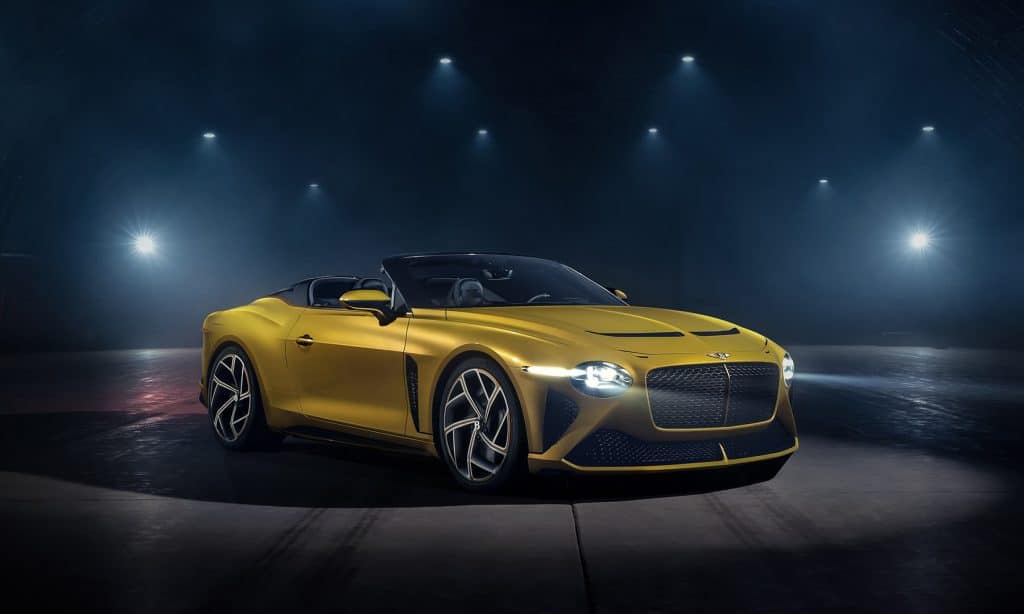Bentley Motors is celebrating the 70th founding anniversary of its own design department in Crewe, England, with the team’s first project resulting in the creation of the iconic R-Type Continental of 1951.
At the time it was established, the design department’s key responsibility was to communicate ideas and design proposals, as well as share its vision with other areas of the business. This was achieved by capturing design sketches as watercolor artworks — all painted by hand with no opportunity to click an “undo” button should there be a mistake.
These watercolor renderings were then reproduced in scale or full-size technical drawings depicting side, front, rear, plan elevations and sectional views along a car’s body in order to describe its form to the model makers.

Model makers have basically followed the same processes set in the 1950s. To visualize the drawings in three dimensions, a metal framework is covered with a malleable material (historically wax, then more recently, clay) then accurately shaped to the form of a new vehicle. Measurements could then be taken from the model and cross–referenced back to ensure the drawings are representative.
At present, measuring arms and scanning equipment enable quicker assessment of three dimensional models, with accuracy down to hundredths of a millimeter, and provide data as either numeric printouts or cloud data uploaded directly within the design studio for instant virtual reference.

In this latest era of design, designers can now sketch in a virtual world elements which can be experienced, regardless of geographical location on screens, or through headsets and augmented reality. But even with these new tools and techniques, a full-size model will still have to be made to ensure all fine details are perfect before a vehicle is released for production.
Looking further into the future, design is anticipated to play an even larger role when it comes to the form fully electric Bentley models will take — especially because such vehicles have similar electric motors and other components. Plus, design will also be crucial to enhanced technologies that will define future models.
“Our team of designers is now engaged with their next opportunity — creating Bentley’s first fully electric model, which must translate and reshape those classic forms and details to a truly future-facing design,” said Andreas Mindt, Bentley’s Director of Design.
“Not only that, the car must be sustainable in more ways than just being electric. So we are exploring sustainable materials, recyclability and new ways of working to ensure the car has a low carbon footprint throughout its lifecycle. Getting this design absolutely perfect will help guarantee the next chapter in this astonishing history of Bentley Design,” he added.
Bentley Design has gone beyond luxury vehicles as it now provides lifestyle options, too. Bentley Home furniture can be tailored to meet a customer’s personal tastes, as well as to fit any elegant home. Sporting a passion for individuality, furniture can be customized in the finishes that have made the British brand unique, from the most exquisite leathers and wood veneers.
Each piece is individually finished by hand and fuses traditional craftsmanship with new technology, embodying the techniques and principles of modern luxury integral to Bentley Motors.

